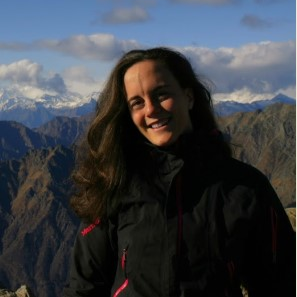Data-Driven Approach Supporting Groundwater Resource Understanding, Protection and Management
A special issue of Water (ISSN 2073-4441). This special issue belongs to the section "New Sensors, New Technologies and Machine Learning in Water Sciences".
Deadline for manuscript submissions: closed (30 November 2023) | Viewed by 16274
Special Issue Editors
Interests: hydrogeochemical modelling; trace elements; groundwater quality; groundwater/surface water interactions
Special Issues, Collections and Topics in MDPI journals
Interests: hydrogeology; groundwater; climate change effects on groundwater resources; water safety plans; groundwater natural contamination; natural background levels (NBL)
Interests: reactive transport modeling; groundwater contamination; hydro(bio)geochemical processes modeling; uncertainty quantification; geostatistics for hydrogeology and environmental sciences; time series analysis
Special Issues, Collections and Topics in MDPI journals
Interests: hydro(geo)logy; machine/deep learning and data-driven modeling; hydrological forecasting; time series; water quality; groundwater vulnerability and contamination risk; groundwater resources management
Special Issues, Collections and Topics in MDPI journals
Special Issue Information
Dear Colleagues,
Groundwater is a vital resource for human and ecosystem needs worldwide. In a scenario of climate change and increasing anthropogenic impacts on groundwater, understanding the main drivers affecting groundwater resource quality and availability is the main challenge in the scope of more sustainable groundwater management. In the last few decades, monitoring networks' expansion and persistence over time have led to increased data availability: environmental datasets are growing in size, complexity, and resolution. Extensive monitoring data require proper techniques and tools to be managed, elaborated, interpreted, and integrated on a spatial or temporal scale to obtain reliable results. The scientific community is constantly working on understanding the best and most up-to-date techniques to investigate and exploit these valuable data. This Special Issue aims to expand the knowledge on data-driven applications on groundwater data. We welcome the submission of papers concerning data analysis and modelling of groundwater quality or quantity datasets; examples can be: a) Data mining, spatial, temporal, or multivariate analysis of groundwater quality data or b) time series analysis and forecasting of groundwater head and springs discharge. We also encourage new insights on overcoming the most widely known problems such as missing or non-detected data or sensors and analytical uncertainty management. The final goal of this Special Issue is collecting up-to-date applications of data-driven techniques in the scope of groundwater resource understanding, protection, and management.
Dr. Marco Rotiroti
Dr. Chiara Zanotti
Dr. Diego Di Curzio
Dr. Rahim Barzegar
Guest Editors
Manuscript Submission Information
Manuscripts should be submitted online at www.mdpi.com by registering and logging in to this website. Once you are registered, click here to go to the submission form. Manuscripts can be submitted until the deadline. All submissions that pass pre-check are peer-reviewed. Accepted papers will be published continuously in the journal (as soon as accepted) and will be listed together on the special issue website. Research articles, review articles as well as short communications are invited. For planned papers, a title and short abstract (about 100 words) can be sent to the Editorial Office for announcement on this website.
Submitted manuscripts should not have been published previously, nor be under consideration for publication elsewhere (except conference proceedings papers). All manuscripts are thoroughly refereed through a single-blind peer-review process. A guide for authors and other relevant information for submission of manuscripts is available on the Instructions for Authors page. Water is an international peer-reviewed open access semimonthly journal published by MDPI.
Please visit the Instructions for Authors page before submitting a manuscript. The Article Processing Charge (APC) for publication in this open access journal is 2600 CHF (Swiss Francs). Submitted papers should be well formatted and use good English. Authors may use MDPI's English editing service prior to publication or during author revisions.
Keywords
- groundwater
- data mining
- multivariate analysis
- time series analysis
- machine learning
- geostatistics
- neural networks
- groundwater forecasting
- data management and preprocessing








